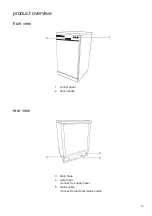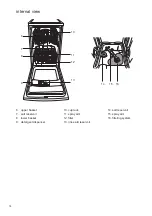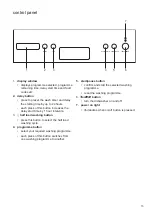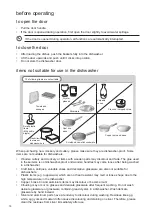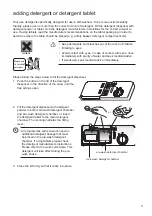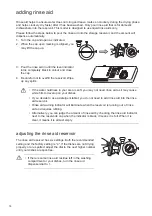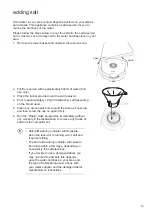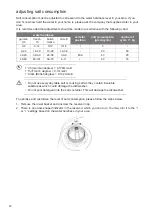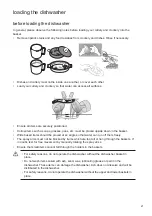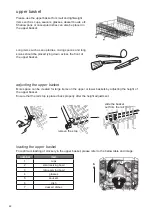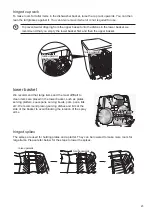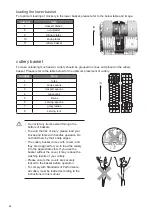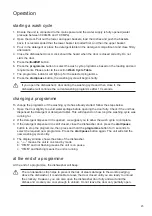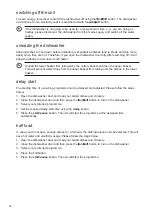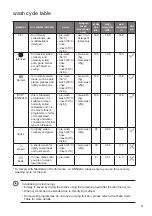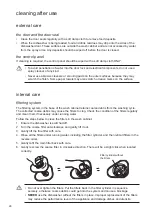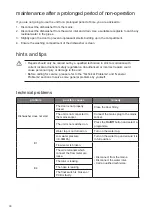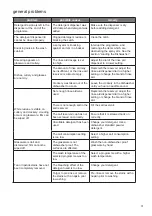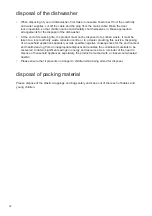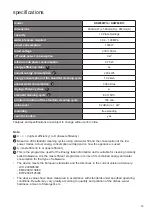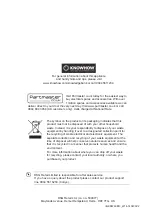
27
wash cycle table
programme
cycle selection information
process
detergent
amount
(pre-wash/ main
wash)
running
time
(min.)
energy
consumption
(kWh)
water
consumption
(I)
rinse
aid
3in1
• for normally
soiled loads, use
multifunctional
detergent
• pre-wash
(50°C)
• wash (55°C)
• rinse
• rinse (65°C)
• drying
• use 3 in 1
detergent
tablet only
160
1.35
16.0
Intensive
• for heaviest soiled
crockery, and
normally soiled
pots, pans, dishes
etc with dried on
soiling.
• pre-wash
(50°C)
• wash (65°C)
• rinse
• rinse
• rinse (55°C)
• drying
• pre-wash
(5g)
• main wash
(25g)
125
1.36
19.5
Normal
• for normally soiled
loads, such as pots,
plates, glasses and
lightly soiled pans.
• pre-wash
(50°C)
• wash (55°C)
• rinse
• rinse (65°C)
• drying
• pre-wash
(5g)
• main wash
(25g)
160
1.30
16.0
ECO*
(EN50242)
• this is Standard
programme, it is
suitable to clean
normally soiled
tableware and it is
the most efficient
programme in terms
of its combined
energy and water
consumption for that
type of tableware.
• pre-wash
• wash (50°C)
• rinse (65°C)
• drying
• pre-wash
(5g)
• main wash
(25g)
165
1.02
12.0
Glass
• for lightly soiled
crockery and glass
• pre-wash
• wash (40°C)
• rinse
• rinse (60°C)
• drying
• main wash
(20g)
95
0.90
16.0
Rapid
• a shorter wash for
lightly soiled loads
and quick wash
• wash (40°C)
• rinse
• rinse (40°C)
• main wash
(20g)
30
0.50
11.0
Soak
• to rinse dishes that
you plan to wash
later that day.
• pre-wash
8
0.01
4.0
* To comply with Standards of Performance, i.e. EN50242, please ensure you use the economy
washing cycle for the test.
Condensing dry technology
• Energy is saved by drying the dishes using the remaining heat after the last rinse cycle.
• Wash cycle times are extended due to this drying method.
• Some wash programmes do not have a drying function, please refer to the Wash Cycle
Table for more details.

